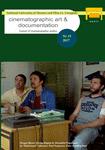Humour and society in Două loturi (1952) and Două lozuri (2016)
Humour and society in Două loturi (1952) and Două lozuri (2016)
Author(s): Eugen IstodorSubject(s): Film / Cinema / Cinematography
Published by: Universitatea de Teatru si Film »I.L. Caragiale« (UNATC)
Keywords: risk; chance; fate; edgework; Două loturi; communism; consumption; globalization;
Summary/Abstract: Between the years 1957 and 2016, Romanian cinematography transposed into film I.L. Caragiale's short story: "Două loturi" (1898) ["Two Lottery Tickets"]. Over a period of almost 60 years, the films Două loturi (1957)15 and Două lozuri (2016)16 reproduced the same topos of Caragiale’ story Două loturi (1901): the lottery, one of the simplest methods of testing chance and risk (Reith, 1999:7). The statistics of the American cinematographic industry reveal that the above mentioned period witnessed the production of entire series of films about casino games and even one about a general knowledge competition such as Slumdog Millionaire (2008), which won the Oscar for Best Motion Picture of the year, the Golden Globe for Best Motion Picture Drama and the BAFTA award for Best Film. In this manner, other superior types of testing chance are tackled and, in addition, the theme of social reward for experience and competence is publically imposed. Not only does the time period between Două loturi and Două lozuri provide us with the image of an elementary formula for gain, but also the heroes of Romanian films, Lefter Popescu and Pompiliu, reproduce the same cultural stereotypes, ignoring the political and cultural changes that separate them in the approximately 60- year gap, including the processes of modernization (Giddens, 2006:45) and hyperconsumption (Lipovetsky, 2007:67). The present theoretical attempt unfolds as a sociological theory of humour, starting from the characterization of the public sphere and audience of cultural products. We consider that the direction society is heading towards could be an explanation with respect to thematic stagnation, but also a measure for the way humour functions as a factor of social influence. But, in fact, who responded with laughter and how did they do it in different eras, when faced with an identically perpetuated story? To this end, we will develop theories of chance and risk (Reith, 1999, Cosgrave, Giddens, Beck,2006), while economically and socio-politically reconstructing the Romanian public space in three different historical moments (the end of the nineteenth century, the beginning of communism and the globalized period of the 2000s) in order to highlight the manner in which humour has operated as a symbolic form of social interventionism (Kierkegaard, 2006, Carroll, 2014).
Journal: Cinematographic Art & Documentation
- Issue Year: 2017
- Issue No: 19
- Page Range: 48-57
- Page Count: 10
- Language: English

